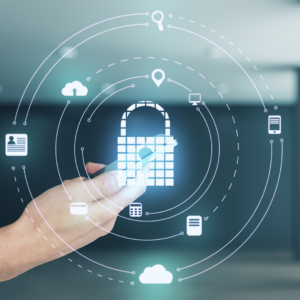 Outsourcing facilities management services in aged care is gaining traction as a strategic approach to improve operational efficiency while ensuring that elderly residents’ comfort and well-being remain paramount. By partnering with specialised service providers, aged care facilities can achieve higher standards of care, comply with regulations, and effectively manage costs.
Outsourcing facilities management services in aged care is gaining traction as a strategic approach to improve operational efficiency while ensuring that elderly residents’ comfort and well-being remain paramount. By partnering with specialised service providers, aged care facilities can achieve higher standards of care, comply with regulations, and effectively manage costs.
The primary benefit of outsourcing facilities management in aged care is cost efficiency. It allows facilities to leverage expertise and resources that would be costly to develop in-house. This often includes specialised maintenance, housekeeping, and safety measures tailored to the unique needs of elderly care environments. Moreover, outsourcing can enhance compliance and risk management. Third-party service providers are well-versed in the stringent regulations governing aged care facilities, ensuring all practices meet legal standards and reducing the risk of non-compliance penalties.
Outsourcing ensures consistency and reliability in service provision, contributing to a stable and safe living environment for residents. This consistency is crucial in fostering a sense of security and comfort for the elderly, who greatly benefit from a well-maintained and managed living space. Another critical factor is the ability to focus core resources on resident care. By entrusting experts such as Intaus Group, aged care staff can dedicate more time and attention to their primary responsibility: the health and well-being of the residents. This shift in focus not only improves the quality of life for residents but also boosts staff morale and productivity.
Here are some key benefits to outsourcing:
1. Expertise and Specialisation
Outsourcing allows aged care providers to leverage the expertise of specialists. The team at Intaus Group bring a wealth of knowledge and experience in maintaining and managing facilities. We ensure all aspects of the facility are kept at a high standard, including everything from routine maintenance to compliance with health and safety regulations.
2. Cost Efficiency
Outsourcing can lead to significant cost savings by reducing the need for in-house staff. Service providers often have economies of scale that allow them to offer services at a lower cost.
3. Compliance and Risk Management
Aged care facilities must adhere to strict regulatory standards. When you choose to outsource, much of your compliance is managed by experts who are up-to-date with the latest regulations. This can reduce the risk of non-compliance and the associated penalties. Service providers also have their own risk management procedures, reducing the potential for accidents and incidents.
4. Operational Efficiency
Outsourcing facilities management can streamline operations, allowing aged care providers to focus on their core mission of caring for residents. Intaus Group can offer rapid response times and efficient service delivery, ensuring that any issues are addressed promptly.
5. Access to Advanced Technology
Many facilities management companies have access to advanced technology to assist in the managing and monitoring area of service. This includes real-time tracking of maintenance activities, predictive maintenance using data analytics, and automated reporting. These technologies can enhance the efficiency and effectiveness of your aged care facility.
6. Flexibility and Scalability
When you outsource, it gives you the flexibility to scale services up or down based on your needs. At Intaus Group we find this particularly helpful in the aged care sector as demands can fluctuate. We can quickly adapt to these changes, ensuring that your service remains consistent.
7. Improved Resident Satisfaction
A well-maintained facility directly impacts the quality of life for residents. By outsourcing to companies such as Intaus Group, aged care providers can ensure that the environment is safe, clean, and comfortable, leading to higher resident satisfaction and better overall care.
Compliance Monitoring
 Aged care providers must adhere to a range of government regulations and standards. These have been designed to protect residents and ensure they receive high-quality care. In Australia, the Aged Care Quality and Safety Commission (ACQSC) oversees compliance.
Aged care providers must adhere to a range of government regulations and standards. These have been designed to protect residents and ensure they receive high-quality care. In Australia, the Aged Care Quality and Safety Commission (ACQSC) oversees compliance.
The ACQSC regularly monitors aged care providers to ensure they meet these standards. This includes routine inspections, audits, and assessments. If a provider fails to meet the required standards, the ACQSC can take regulatory action, such as issuing formal notices or sanctions.
The ACQSC uses a star rating system to provide transparency about the quality of care in aged care homes. These ratings are based on compliance performance and history, helping families make informed decisions when choosing a provider.
If you are looking to outsource the facilities management there are numerous benefits, cost efficiency, enhanced compliance, and an improved focus on resident care. By partnering with Intaus Group, your aged care facilities can create a safer, more comfortable environment for elderly residents, ultimately enhancing their overall quality of life.


 As the world becomes increasingly interconnected, traditional lock-and-key access control methods are giving way to more convenient and efficient solutions. Mobile access control, powered by digital credentials on smartphones and wearable devices, is emerging as a game-changer for managing physical access to buildings and facilities. Intaus Group wanted to explore the benefits of mobile access control from a strata maintenance standpoint.
As the world becomes increasingly interconnected, traditional lock-and-key access control methods are giving way to more convenient and efficient solutions. Mobile access control, powered by digital credentials on smartphones and wearable devices, is emerging as a game-changer for managing physical access to buildings and facilities. Intaus Group wanted to explore the benefits of mobile access control from a strata maintenance standpoint. While mobile access control offers numerous benefits, strata managers should consider the following:
While mobile access control offers numerous benefits, strata managers should consider the following: